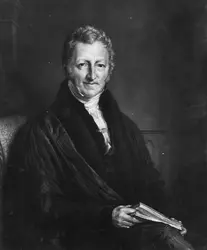FAMILLE Économie de la famille
Bibliographie
A. Adsera, « Changing fertility rates in developed countries. The impact of labour market institutions », in Journal of Population Economics, vol. 17, févr. 2004
P. Apps & R. Rees, « Collective Labor Supply and household production », in Journal of Political Economy, 105, 1997
G. S. Becker, « An economic analysis of fertility », in Becker dir., Demographic and Economic Change in Developed Countries, Princeton University Press, Princeton (N.J.), 1960 ; « A theory of the allocation of time », in Economic Journal, 75, 1965 ; « Theory of marriage : Part I », in Journal of Political Economy, 81, 1973 ; « Theory of marriage : Part II », in Journal of Political Economy, 82, 1974 ; A Treatise on the Family, Harvard University Press, 1993 (1re éd., 1981)
G. S. Becker & G. Lewis, « On the interaction between quantity and quality of children », in Journal of Political Economy, 81, 1973
T. C. Bergström, « Economics in a family way », in Journal of Economic Literature, 34, 1996
F. Bourguignon & P-A. Chiappori, « Collective Models of household behavior : An introduction », in European Economic Review, 36, 1992
P. A. Browning & M. Chiappori, « Efficient Intra-Household Allocations : A general characterization and empirical tests », in Econometrica, 66, 1998
P-A. Chiappori, « Rational Household Labor supply », in Econometrica, 56, 1988 ; « Collective Labor Supply and welfare », in Journal of Political Economy, 100, 1992 ; « Introducing household production in collective models of labor supply », in Journal of Political Economy, 105, 1997
P-A. Chiappori, B._Fortin & G. Lacroix, « Marriage Market, divorce legislation and household labor supply », in Journal of Political Economy, 110, 2002
P-A. Chiappori, M. Iyigun & Y. Weiss, « Investment in Schooling and the Marriage Market », in American Economic Review, 99(5), 2009
H. Couprie & G. Ferrant « Welfare Comparisons, Economies of Scale and Equivalence Scale in Time Use », in Annales d’Économie et de Statistique (à paraître), 2014
H. Davies, H. Joshi, M. Killingsworth & R. Peronaci, « How do couples spend time ? », in S. Gustafsson et D. Meulders dir., Gender and the Labour Market. Econometric Evidence on Obstacles in Achieving Gender Equality, Macmillan, Basingstoke, 2000
D. Del Boca, « Mothers, fathers and children after divorce », in Journal of Population Economics, vol. 16, 3, 2003
D. Gale & L. Shapley, « College Admissions and the stability of marriage », in American Mathematical Monthly, 69, 1962
R. Gronau, « Leisure, home production and work : The theory of the allocation of time revisited », in Journal of Political Economy, 85, 1977_/ S._Grossbard, « The New Home Economics at Columbia and Chicago », in S. Grossbard dir., Jacob Mincer, a Pioneer of Modern Labor Economics, chap. 7, Springer, 2006
S. Jevons, The State in its Relation to Labour, Augustus Kelley, New York, 1968 (éd. or. 1882)
T. Kogel, « Did the association between fertility and female employment within OECD countries really changed its sign ? », in Journal of Population Economics, vol. 17, févr. 2004
E. Lazear & R. Michael, « Family Size and the distribution of per capita income », in American Economic Review, 70, 1980
S. J. Lundberg, R. Pollak & T. Wales, « Do husbands and wives pool their resources ? Evidence from the United Kingdom child benefit », in Journal of Human Resources, 32(3), 1997
M. Manser & M. Brown, « Marriage and household decision theory-A bargaining analysis », in International Economic Review, 21, 1980
A. Marshall, Principles of Economics, 1890
J. S. Mill. Principes d’Economie Politique, 1848
J. Mincer, « Market Prices, opportunity costs, and income effects », in C. Christ dir., Measurement in Economics : Studies in Mathematical Economics and Econometrics in Honor of Yehuda Grunfield, Stanford University Press, Stanford (Calif.),[...]
La suite de cet article est accessible aux abonnés
- Des contenus variés, complets et fiables
- Accessible sur tous les écrans
- Pas de publicité
Déjà abonné ? Se connecter
Écrit par
- Catherine SOFER : professeur émérite à l'université Paris-I-Panthéon-Sorbonne
Classification
Pour citer cet article
Catherine SOFER. FAMILLE - Économie de la famille [en ligne]. In Encyclopædia Universalis. Disponible sur : (consulté le )
Médias
Autres références
-
ADOLESCENCE
- Écrit par Mihalyi CSIKSZENTMIHALYI, Universalis
- 2 667 mots
- 1 média
...certaines études ont montré que les adolescents passent en moyenne trois heures et demie par jour sans leurs parents ou sans la présence d'autres adultes. En outre, pendant les rares heures où leurs parents sont présents, pour peu que ces derniers restent rivés devant le poste de télévision, les adolescents... -
ADOPTION
- Écrit par Pierre MURAT
- 8 894 mots
...la connaissent. Surtout elle a été très pratiquée par les romains, selon des formes et pour des raisons qui ont varié selon les époques. Mais à Rome, la notion de famille ne repose pas sur l'engendrement et l'affection, mais sur la soumission à la puissance d'un chef de famille (pater... -
ASSYRIE
- Écrit par Guillaume CARDASCIA, Gilbert LAFFORGUE
- 9 694 mots
- 6 médias
La famille est de type patriarcal. Son chef possède sur la femme et les enfants une forte autorité ; il exerce même sur eux une véritable juridiction domestique pour les méfaits qui le lèsent dans son honneur ou ses biens (adultère de la femme, inconduite de la fille, vol commis par l'épouse). On ignore... -
BABYLONE
- Écrit par Guillaume CARDASCIA, Gilbert LAFFORGUE
- 7 328 mots
- 14 médias
La famille babylonienne est fondée sur un mariage qui n'est pas rigoureusement monogamique. En principe, l'homme n'a qu'une épouse en titre, procréatrice de fils qui assureront le culte des ancêtres et continueront l'exploitation du domaine familial. Néanmoins, non seulement les rapports sexuels du... - Afficher les 45 références
Voir aussi
- CAPITAL HUMAIN
- RISQUE ÉCONOMIQUE
- SALAIRE
- MÉNAGES, comptabilité
- OPTIMUM ÉCONOMIQUE
- BIENS DE CONSOMMATION
- BIENS PUBLICS ou COLLECTIFS
- DÉCISION
- FÉCONDITÉ
- MODÈLES ET MODÉLISATION, économie
- UTILITÉ FONCTION D'
- ÉDUCATION ÉCONOMIE DE L'
- BUDGETS FAMILIAUX
- DIVISION SEXUELLE DU TRAVAIL
- TRAVAIL DES FEMMES
- FEMMES DROITS DES
- TRAVAIL DOMESTIQUE







